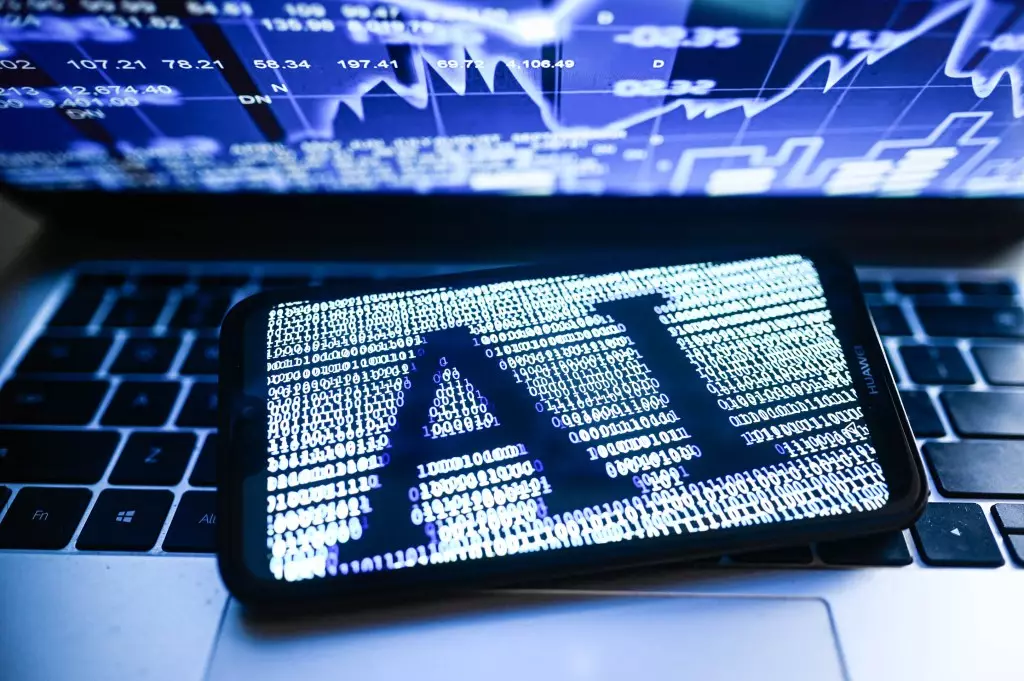In recent months, there has been a palpable tension brewing between artificial intelligence (AI) development and copyright protection, two forces that significantly shape the landscape of the creative industries. The Motion Picture Association (MPA) recently articulated its stance in an extensive ten-page letter submitted to the White House Office of Science and Technology. While such official communications often fade into the bureaucratic ether, this letter resonates profoundly with burgeoning concerns about the implications of AI on original creativity—a topic that is too often overshadowed by the glitzy allure of technological advancements. The stakes are alarmingly high: the future of artistic expression and, by extension, the very fabric of our cultural heritage hangs dangerously in the balance.
The MPA asserts that AI can and should work harmoniously alongside a copyright system that honors creative labor. This sentiment is essential, yet dubious claims surrounding national security and economic competitiveness cast a long shadow over the debate. Giants like OpenAI and Google are advocating for reduced restrictions, framing the issue as an existential race against global competitors like China. However, this narrative is problematic. It threatens to prioritize corporate interests over the creative landscape that these companies purport to value. In such discussions, we must critically examine who ultimately benefits from the so-called “freedom” these tech behemoths seek.
The Heart of the Industry: Copyright
As someone who identifies with center-wing liberal values, it is disheartening to witness the MPA’s calculated moderation. While their call for copyright protection is certainly warranted, their requests are paradoxically tailored to appease both sides of the aisle. They advocate for AI’s potential to enhance creativity and economic competitiveness while firmly insisting that copyright laws must remain rock-solid. This balancing act is not dissimilar to a politician promising to lower taxes while increasing government spending—ambitious but hardly realistic.
Charlie Rivkin, the MPA President, highlighted an essential principle: copyright is the linchpin of the creative industry. Still, the juxtaposition between copyright protection and the unrestricted growth of AI-generated content creates an uncomfortable predicament. Are we, as a society, willing to open the floodgates for technological development at the cost of original creative expression? Rivkin’s careful rhetoric skirts around the more pressing question: what happens when AI begins to erode the very foundation of creativity it seeks to enhance?
Voices from the Creative Community
Hollywood guilds have taken a firm stand against the MPA’s measured approach, arguing that it fails to adequately defend the interests of creators—from writers to actors. Industry luminaries have begun to voice their concerns through open letters, highlighting the urgent need for a robust legal framework that protects against the exploitation of intellectual property. The fear of “massive, illegal value destruction” is not unfounded; it is a clarion call for creative professionals who wish to defend the integrity of their work against the relentless algorithms of AI.
Consider the implications of a future where the unique nuances of storytelling—those elements that genuinely resonate with human experiences—are supplanted by AI-generated outputs based on existing data. The richness of narrative, rooted in human emotion and experience, risks being diluted into a formulaic mishmash. With AI’s superficial understanding of context, jokes, and emotional depth, we are standing at a precipice. Where does that leave authentic creative expression? How can we ensure that technology amplifies rather than stifles originality?
Economic Incentives and Creative Integrity
The economic figures cited by the MPA—indicating that the copyright industry contributes over $2 trillion to the U.S. economy—underscore the importance of copyright not just for artists but also for the fiscal health of the nation. However, the assertion that AI could bolster this further by creating high-quality content relies heavily on the sustainability of original works. Without effective protections, AI models could inadvertently promote a culture of imitation rather than innovation.
Furthermore, the crux of the creative industry’s argument is not merely about the adequacy of existing laws but the enforcement of those laws. The MPA’s assertion that copyright law has proven itself sufficient over the past century is at odds with the urgency expressed by many creators who feel their rights are being overlooked. This tension illustrates that the evolution of technology requires an equally dynamic and responsive legal framework.
The Future of Creativity: A Call for Action
As we navigate this complex landscape, it becomes evident that our future is not merely about choosing between AI advancement and copyright preservation. Instead, it is about crafting a nuanced framework that embraces both. The overreach of tech companies must be curtailed to prevent the jeopardizing of artistic integrity. We need a paradigm shift that recognizes the interdependence of creativity and technology, one that nurtures innovation while firmly upholding the rights of those who create. In this battle for the soul of creativity, we must reaffirm our commitment to the artists who shape our culture, lest we allow AI to define the very narratives that make us human.



Leave a Reply